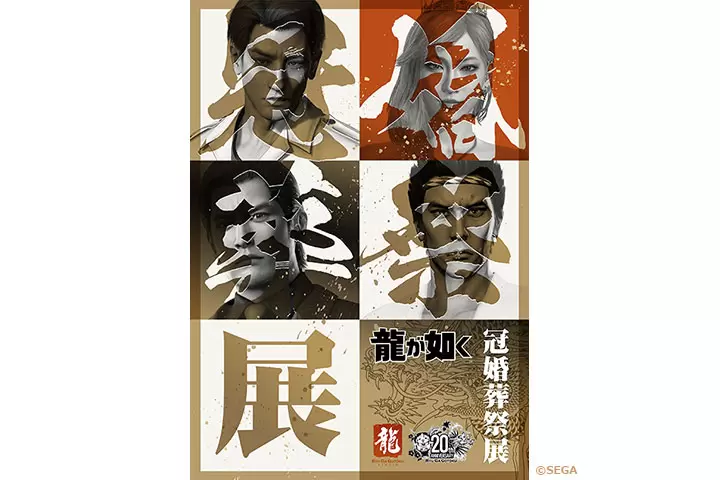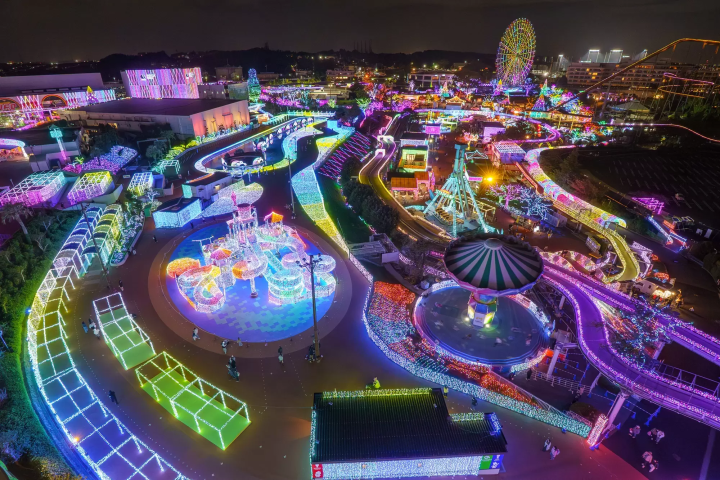Fukushima Fisheries and Food Safety: 10 Years After the Tohoku Earthquake

Fukushima’s fisheries were heavily damaged by the tsunami disaster and nuclear accident that occurred on March 11, 2011, in northeastern Japan. In this article, we focus on the revival efforts made by local fishers in Iwaki, who inspect their catches daily for safe distribution.
Heavy Damages to Fukushima’s Fisheries After 3/11

Photo taken at the Live Iwaki Museum on the second floor of Iwaki Lalamew
The Great East Japan Earthquake (Tohoku Earthquake) occurred at 14:46 on March 11, 2011. This moment is one that many Japanese can never forget.
The Hamadori area of Fukushima, which is located between the mountains and the ocean, was heavily damaged by the tsunami that followed.
It was later reported that the disaster caused 82.4 billion yen in total damages to Fukushima’s fishing industry.
Fishing Industry Revival Efforts

Photo taken at the Live Iwaki Museum on the second floor of Iwaki Lalamew
The Kuroshio current (warm) and Oyashio current (cold) converge in Fukushima’s waters. The cold current brings large amounts of plankton from spring to summer, attracting schools of skipjack tuna and sardines.
The ocean where the two currents merge is inhabited by other fish species and brings huge catches to surrounding fishing ports. This seafood is known as “Joban-mono.”
Onahama Port in Iwaki was famous for its catches of Joban-mono that included skipjack tuna, Pacific saury, Japanese flatfish, righteye flounder, octopus, greeneye fish, abalone, and sea urchins. It is located about 70 kilometers from the Fukushima Daiichi Nuclear Power Plant.

Photo taken at the Live Iwaki Museum on the second floor of Iwaki Lalamew
During the Fukushima Daiichi Nuclear Power Plant Accident, the radioactive elements Caesium-134 and Caesium-137 were released into the environment.
Caesium-137 has a half-life (the time required for half of the element to decay) of 30 years and can possibly affect the safety of food products. On March 15, four days after the disaster, the Fukushima Prefectural Federation of Fisheries Cooperative Associations (Prefectural Federation of Fisheries) decided to halt all coastal fishing operations.

Photo taken at the Live Iwaki Museum on the second floor of Iwaki Lalamew
Following the earthquake, emergency environmental radiation monitoring tests (hereafter referred to as monitoring tests *1) were continuously conducted in Fukushima Prefecture to ensure the safety of their marine products. Immediately after the nuclear accident in 2011, the percentage of marine samples that exceeded 100Bq/kg in radioactive cesium concentrations totaled 34%. However, levels have rapidly decreased with no samples exceeding 100Bq/kg in the six years between April 2015 and March 2021.
Monitoring tests are also conducted on the seawater. Water monitoring tests are conducted every month at major harbors, fishing ports, and shallow fishing grounds. No traces of radioactive materials have been detected since November 2012.
The Testing System for Food Safety

From the official Fukushima Fish News (Japanese) website
In 2012, the prefecture began revival efforts for its fishing industry. Part of these efforts includes sharing the seafood safety standards from Fukushima and restoring distribution channels.
This is why Fukushima Prefecture and the Prefectural Federation of Fisheries concurrently conduct radiation monitoring tests and publicly announce those results.
Monitoring tests on seafood products have been conducted by the prefecture since April 2011. These test results are publicly announced on the Fukushima Prefectural Government website.
Additionally, the Prefectural Federation of Fisheries conducts independent tests (screening tests *2) on all fish caught and sold at seafood markets in the prefecture. These tests are carried out on daily catches for each species.
They have independently set a stricter standard limit of 50Bq/kg. This is to prevent the risk of a product exceeding 100Bq/kg (*3) of radioactive cesium (the standard limit based on the regulations of the Food Sanitation Act) being distributed in the market.
Regular testing began in June 2012. All of the test results are announced on the Prefectural Federation of Fisheries’ official website.

Photo taken at Onahama Fish Market
Fukushima Prefecture Standard Limit
| Type of Test | Inspection Agency | Testing Frequency | Cesium-134 & Cesium-137 Standard Limit |
| Screening Test | Fukushima Prefectural Federation of Fisheries Cooperative Associations (Fisheries Cooperative) | All catches | 25Bq/kg |
| Screening Test | Fukushima Prefectural Fisheries and Marine Science Research Center/ Research Institute of Fisheries Resources (Prefectural Organization) | When fisheries cooperative samples exceed 25Bq/kg | 50Bq/kg |
| Monitoring Test | Fukushima Agricultural Technology Center | Twice a week | 100Bq/kg |
Reference: Country Standard Limits
| Cesium-134 & Cesium-137 Standard Limit | |
| Codex Alimentarius Commission Codex Standard | 1,000Bq/kg |
| EU | 1,250Bq/kg |
| USA | 1,200Bq/kg |
| Taiwan/ South Korea | 370Bq/kg |
| China | 800Bq/kg |
*1: The emergency environmental radiation monitoring tests are conducted to provide accurate information to consumers, confirm product safety, and understand the influence of radioactive materials on agricultural and seafood commodities. Items that exceed the radiation standard limit will be banned by the government from shipment or requested by the prefecture to refrain from selling and not be distributed.
*2: Screening tests are conducted by the Prefectural Federation of Fisheries and Fisheries Cooperative to confirm the safety of shipments based on an independent and stricter standard of 50Bq/kg. This is to prevent the risk of a product exceeding 100Bq/kg (*3) of radioactive cesium (the standard limit based on the regulations of the Food Sanitation Act) being distributed in the market. A detailed inspection will be conducted by the prefecture if an item exceeds 25Bq/kg in screening, while an item exceeding 50Bq/kg is prevented from shipment.
*3: The national radiation standard for food products is 100Bq/kg in Japan. This standard limit is reduced from a numerical figure (120Bq/kg) calculated when accounting for the difference in product and amount intake by age and gender. This standard considers all ages, including infants. Even if you consume the standard limit every day, it has an extremely minimal effect on one’s lifetime.
Our writer toured the radiation screening room at Onahama Fish Market in Iwaki City.

Photo taken at Onahama Fish Market
More than one sample per fish species undergoes screening when seafood is caught and sold at the fish market.
After being lightly rinsed, the fish are typically processed for consumption. For example, a fish that will be simmered or grilled has its skin untouched, while fish for sashimi is skinned.
Afterward, it is either sliced or minced and placed inside the inspection machine. The machine will then measure the radioactive cesium concentration.
All data is made public on Onahama Fish Market’s official website. In June 2021, when our writer visited, the market tested a total of 984 samples in a single month for 22 days.
The June screenings confirmed radioactive cesium over 25Bq/kg in one sample of Japanese flatfish, striped jewfish, and fat greenling. The samples were submitted for a detailed inspection by the prefecture. It was shortly confirmed that the levels were below the market’s independent standard of 50Bq/kg. Radioactive material was not detected in the remaining 981 samples.
Under these conditions, the inspection machine can detect between a certain limit value. Non-detection indicates that the concentration of radioactive material in the sample were under the limit value detected by the machine.
Testing Takes Time and Effort

Photo taken at Hisanohama Port
Following 2012, the Prefectural Federation of Fisheries and Fisheries Cooperative aimed to gradually ship seafood confirmed safe while under negotiation.

Photo taken at Onahama Fish Market
Seafood exceeding 25Bq/kg in the Prefectural Federation of Fisheries’ screening tests is sent to the Fukushima Prefectural Fisheries and Marine Science Research Center or the Research Institute of Fisheries Resources. The samples then undergo a more detailed inspection.
Species of fish exceeding the standard limit of 50Bq/kg are halted from shipment.
If it exceeds 100Bq/kg, the government will order the fish species to be banned from shipment. It can no longer be shipped until the shipment ban is rescinded by the government and the species is confirmed to be safe for consumption.

Photo taken at Onahama Fish Market
Daily screening tests are a heavy burden on the fisheries and fishing industry. Despite this fact, fishers are funneling time and effort into these tests with the desire to deliver Fukushima’s fish to consumers.
Seafood-related shipment bans by the government have been placed on 44 species. The gradual removal of bans on species confirmed to be safe has progressed over the years. The ban on ocellate spot skate was rescinded in February 2020, and the ban on all seafood shipments was lifted once. However, radioactive cesium exceeding 100Bq/kg was detected in black rockfish in April 2021, resulting in shipment bans to be placed once again.
Coexisting with Deeply Rooted Misinformation

Photo taken at Iwaki Lalamew
Confirmed safe through rigorous testing, Fukushima seafood has increasingly been shipped to markets such as Toyosu in Tokyo.
However, some distributors refuse to purchase the fish after learning it was caught in Fukushima.

Photo taken at Hisanohama Port
Despite conducting numerous tests and publicly releasing the results, there remains “misinformation” among consumers.
These rumors and misinformation cannot be easily swept aside. The self-assured fishers of Fukushima have replied, “It’s important that we coexist with the rumors without trying to force consumers.”
Today, right at this moment, the people in Fukushima’s fishing industry attentively oversee food safety to deliver delicious seafood to consumers.
Read also
Written by Lin
Sponsored by Fukushima Prefecture
MATCHA's promotional account for corporate and local government advertising. We aim to provide useful information to our readers in an enjoyable manner.

































![[Coupon Available] Recommended Fall/Winter Wear from Scandinavian Brand "Helly Hansen"](https://resources.matcha-jp.com/resize/720x2000/2025/12/15-252920.webp)
![Deep dive into Japanese brands! A tour of famous leather shoe stores with GENSEI & Nin [Otsuka Shoes Edition]](https://resources.matcha-jp.com/resize/720x2000/2025/12/15-252972.webp)